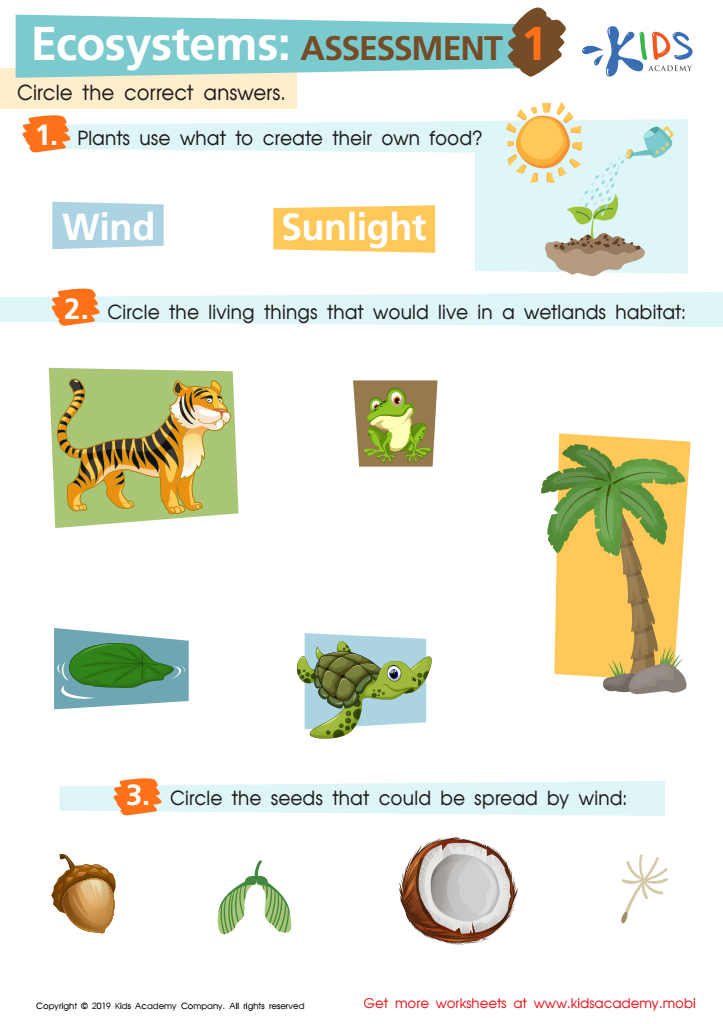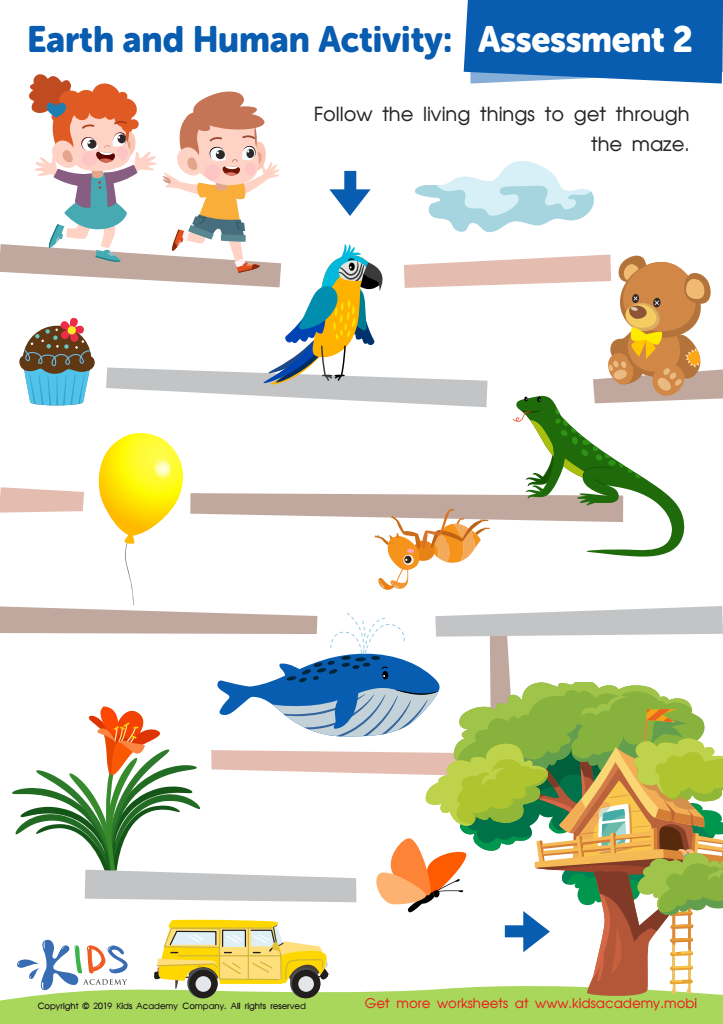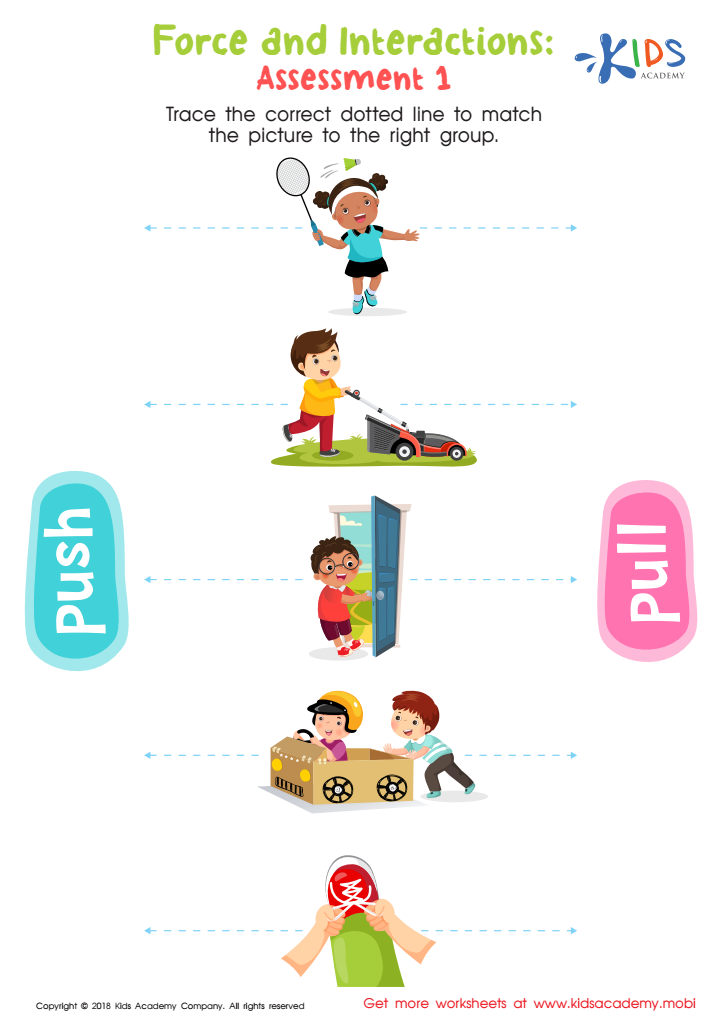Science Worksheets Activities With Answers for Ages 3-7
15 filtered results
-
From - To
Discover engaging science worksheets and activities designed for children ages 3-7! Our carefully curated resources promote inquisitive learning and help young learners explore fundamental scientific concepts. With answer keys provided, parents and educators can easily assess understanding and encourage discussions. Activities cover a variety of themes, ensuring kids will enjoy hands-on exploration that aligns with their developmental stages. Whether it’s understanding the body, observing nature, or grasping simple experiments, these worksheets aim to make learning science fun and interactive. Dive into a world of discovery and spark your child's curiosity with our exciting science activities today!


Matter: Assessment 1 Worksheet


Force and Interactions: Assessment 1 Worksheet


Light and Sound: Assessment 1 Worksheet


Space: Assessment 1 Worksheet


Ecosystems: Assessment 1 Worksheet


Earth's Systems: Assessment 1


Earth and Human Activity: Assessment 2 Worksheet


Light and Sound: Assessment 2 Worksheet


Earth and Human Activity: Assessment 1 Worksheet


Force and Interactions: Assessment 2 Worksheet


Animals and Plants: Assessment 2 Worksheet


Matter: Assessment 2 Worksheet


Ecosystems: Assessment 2 Worksheet


Space: Assessment 2 Worksheet


Animals and Plants: Assessment 1 Worksheet
Parents and teachers should prioritize science activities with answers for ages 3-7 for several important reasons. First, early exposure to science fosters curiosity and encourages children to ask questions about the world around them. Young learners are naturally inquisitive, and hands-on science activities provide them with the opportunity to explore, experiment, and discover, facilitating cognitive development during these formative years.
Moreover, science activities cater to various learning styles—visual, auditory, and kinesthetic—allowing children to engage in meaningful learning experiences. These activities often enhance critical thinking and problem-solving skills, as children learn to make observations, develop hypotheses, and derive conclusions based on their findings.
Providing activities with answers equips parents and teachers with the necessary support to guide discussions and clarify concepts, enhancing the learning experience. It builds confidence in children as they begin to grasp complex ideas through tangible experiences, making learning enjoyable and relatable.
Furthermore, integrating science into early education lays a strong foundation for lifelong learning, potentially sparking interest in STEM (Science, Technology, Engineering, and Mathematics) fields as children grow. Ultimately, fostering a love for science at an early age is essential for nurturing inquisitive, knowledgeable, and well-rounded individuals.
 Assign to My Students
Assign to My Students















